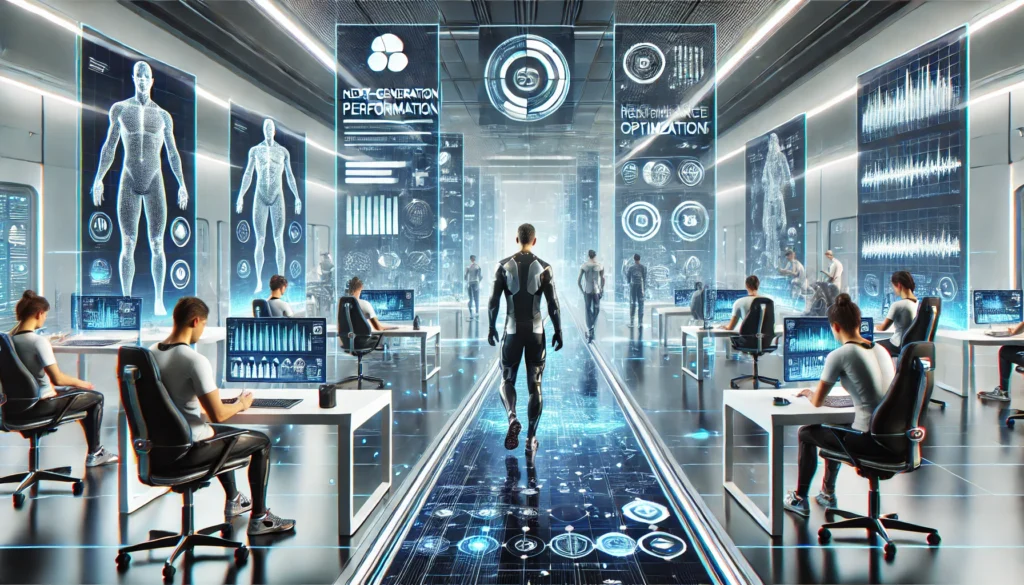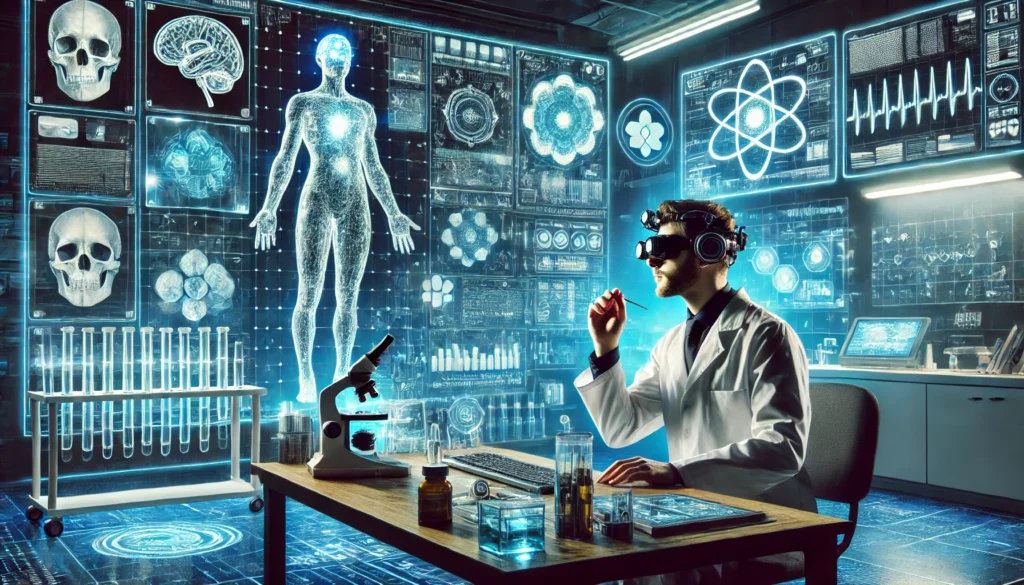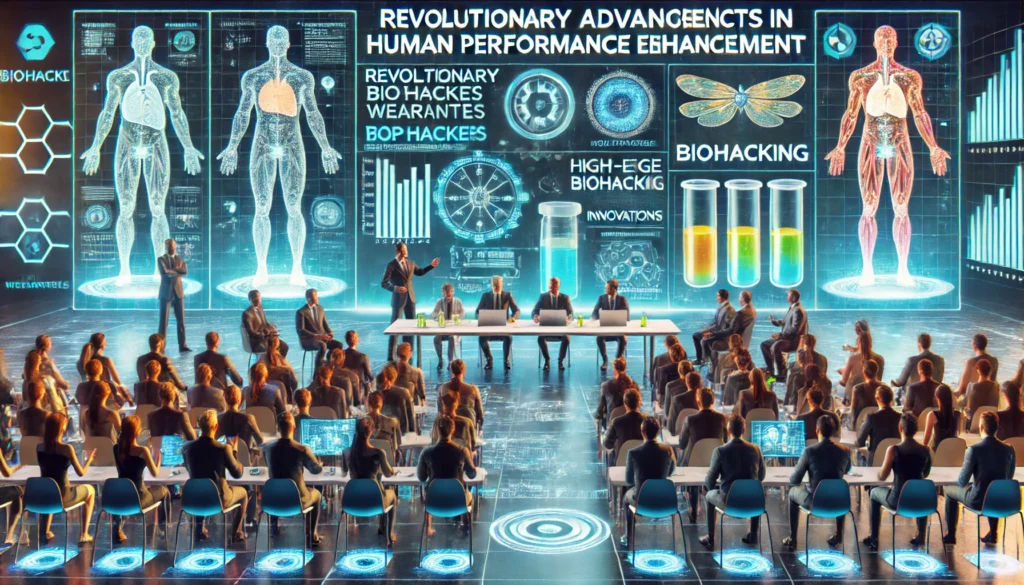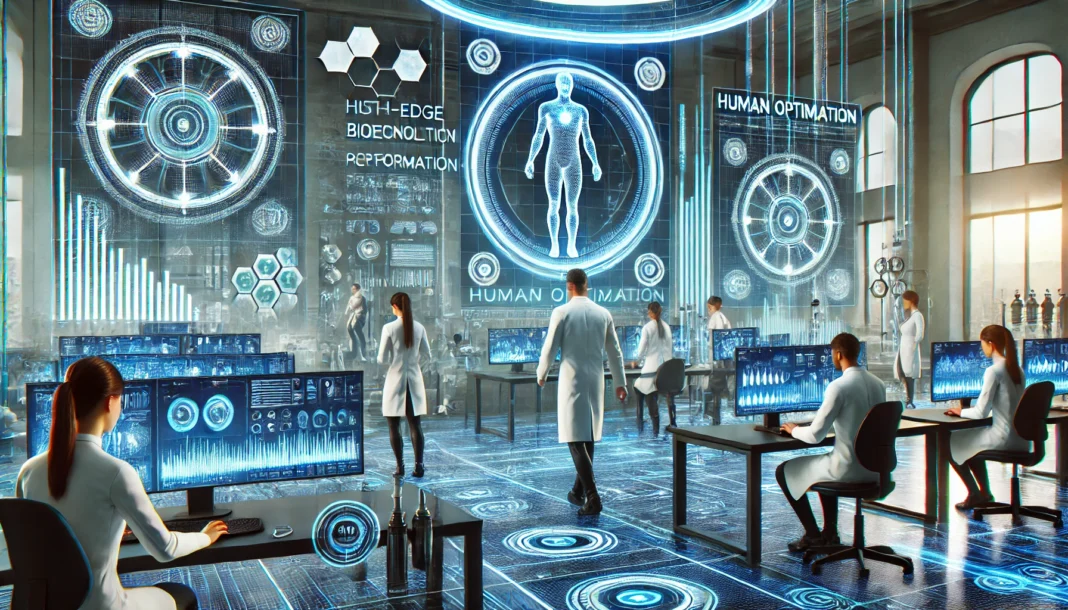Introduction: The Pioneers of Biohacking
The field of biohacking has rapidly emerged as a transformative force in human optimization, pushing the boundaries of biology, technology, and self-experimentation. From enhancing cognitive function to extending lifespan, biohackers are at the forefront of a movement that challenges traditional understandings of health and performance. As interest in biohacking continues to grow, several individuals have distinguished themselves as pioneers, reshaping the landscape of human enhancement. These top biohackers have gained prominence through groundbreaking research, innovative experimentation, and influential advocacy for a future where biology and technology seamlessly integrate.
You may also like: What Is Biohacking? Unlocking the Science of Human Optimization for Peak Performance
The Evolution of Biohacking: From Fringe to Mainstream
In its early stages, biohacking was often dismissed as a fringe movement led by maverick scientists and DIY biologists. However, advancements in neuroscience, genetic engineering, and wearable technology have propelled biohacking into mainstream scientific discourse. Today, famous biohackers collaborate with leading research institutions, develop revolutionary health-tracking devices, and influence global conversations on human augmentation. The shift from underground experimentation to structured, data-driven optimization has solidified biohacking as a legitimate domain of health and wellness innovation.
Dave Asprey: The Father of Bulletproof Biohacking
Dave Asprey is one of the top biohackers, best known for popularizing Bulletproof Coffee and introducing millions to biohacking principles. His focus on cognitive enhancement, metabolic efficiency, and longevity has made him a leading figure in the movement. Asprey’s personal journey of transforming his health through advanced nutrition, nootropics, and biofeedback has inspired a global community. His work underscores the role of diet, supplements, and environmental control in optimizing human performance.
Dr. Rhonda Patrick: Bridging Science and Biohacking
Dr. Rhonda Patrick is a molecular biologist whose research delves into longevity, brain health, and nutritional biochemistry. Unlike traditional biohackers who rely on self-experimentation, Patrick brings rigorous scientific methodology to biohacking principles. She has become a key voice in promoting evidence-based biohacking, particularly in areas like heat stress therapy, micronutrient optimization, and metabolic health. Her impact highlights how academic research and biohacking can intersect to create meaningful advancements in human optimization.
Ben Greenfield: Merging Fitness and Biohacking
As an elite fitness trainer and biohacker, Ben Greenfield has played a significant role in integrating athletic performance with biohacking strategies. His work focuses on using technology, recovery techniques, and metabolic conditioning to push the limits of human endurance. Greenfield’s approach combines ancestral wisdom with modern science, demonstrating that biohacking to lose weight, increase strength, and improve recovery is possible through a strategic, data-driven approach.
Elizabeth Parrish: Leading the Charge in Genetic Biohacking
Elizabeth Parrish, CEO of BioViva, is among the famous biohackers pioneering genetic modification for longevity. She is one of the first individuals to undergo experimental gene therapy aimed at reversing aging. Her work represents the intersection of biohacking and biotech, where advances in gene editing hold the promise of extending human lifespan and combating age-related diseases. Parrish’s vision challenges ethical and regulatory frameworks, pushing the boundaries of what is possible in human genetic enhancement.
Bryan Johnson: The Tech Entrepreneur Turned Biohacker
Bryan Johnson, the founder of Kernel and Blueprint, is a leading figure in biohacking weight loss, cognitive enhancement, and aging reversal. His multimillion-dollar project, Blueprint, is an experiment in controlling every aspect of his biology to achieve peak health and longevity. Johnson’s methodical approach—tracking every biomarker, optimizing his diet, and using cutting-edge interventions—sets a new standard for data-driven biohacking. His work exemplifies how technology and self-experimentation can redefine the limits of human health.
Josiah Zayner: The Controversial DIY Biohacker
Josiah Zayner is one of the most controversial figures in biohacking, known for his radical self-experiments in genetic engineering. As the founder of The Odin, Zayner has made CRISPR gene-editing technology accessible to the public, sparking debates on bioethics and regulation. His willingness to push boundaries has made him a polarizing yet influential figure in the movement. Zayner’s work underscores the tensions between institutional science and the democratization of biotechnology.

The Role of Women in Biohacking: Shifting the Narrative
Historically, biohacking has been dominated by male figures, but a new wave of female biohackers is redefining the space. Figures like Siim Land and Dr. Molly Maloof are integrating biohacking principles with women’s health, hormonal optimization, and longevity science. This shift highlights the growing inclusivity of biohacking, ensuring that strategies are tailored to diverse biological needs.
The Ethical and Legal Implications of Biohacking
As top biohackers continue to experiment with human biology, ethical and legal questions arise. Should individuals have unrestricted access to genetic modifications? How do we regulate self-experimentation while fostering innovation? The rise of biohacking necessitates new frameworks for responsible self-enhancement, balancing personal freedom with public safety.
The Future of Biohacking: Where Do We Go from Here?
The future of biohacking is poised for remarkable advancements, with artificial intelligence, nanotechnology, and regenerative medicine playing crucial roles. As famous biohackers push the limits of human potential, the convergence of biology and technology will redefine aging, intelligence, and physical performance. The next decade will likely see biohacking transition from a niche movement to a mainstream approach to health and wellness, influencing everything from personalized medicine to human augmentation.

Frequently Asked Questions (FAQ) on Top Biohackers Leading the Future of Human Optimization and Performance Enhancement
1. Who are some of the most famous biohackers making groundbreaking advancements today? Some of the top biohackers include figures like Dave Asprey, who pioneered the Bulletproof movement and popularized biohacking for the masses. Another notable biohacker is Dr. Peter Attia, a physician known for his work in longevity science and metabolic optimization. Elizabeth Parrish, the CEO of BioViva, is pushing the boundaries of genetic biohacking, aiming to reverse aging at a cellular level. Ben Greenfield, an influential health consultant and biohacker, experiments with fitness optimization techniques that incorporate technology, supplementation, and regenerative medicine. These famous biohackers contribute to the growing field by sharing their discoveries, experimenting with new methodologies, and influencing scientific and technological advancements in human optimization.
2. How do top biohackers approach longevity and anti-aging? Top biohackers employ a range of strategies to extend lifespan and enhance quality of life, from advanced supplementation to personalized genetic interventions. Some leverage intermittent fasting and caloric restriction, which have been shown to promote autophagy and cellular repair. Others, like Bryan Johnson, founder of Blueprint, take extensive data-driven approaches, using biometrics, regenerative therapies, and customized nutrition plans to slow the aging process. Biohackers also integrate advanced skincare treatments such as peptide injections, stem cell therapy, and NAD+ supplementation to optimize cellular function. These approaches aim to not just extend life but enhance physical and cognitive performance as well.
3. What cutting-edge technologies are top biohackers using today? Famous biohackers are utilizing a range of high-tech innovations to track and enhance their biology. Wearable biometric devices like Oura Rings and WHOOP bands provide real-time insights into sleep, heart rate variability, and recovery. Some biohackers use cryotherapy and red light therapy to reduce inflammation and accelerate cellular repair. Neural implants and transcranial electrical stimulation devices are gaining traction as a means to improve cognitive function and mental clarity. Gene therapy and CRISPR-based interventions are emerging as radical approaches to longevity and performance enhancement. These technologies enable biohackers to take a highly personalized and data-driven approach to human optimization.
4. What are the ethical concerns surrounding the practices of famous biohackers? Biohacking presents several ethical dilemmas, especially when it involves self-experimentation and unregulated medical interventions. Some critics argue that biohacking bypasses traditional safety protocols, potentially putting individuals at risk. Others question the accessibility of biohacking advancements, as many cutting-edge therapies are costly and only available to a select few. There is also the issue of genetic modification, with some fearing the unintended consequences of gene editing in humans. Additionally, cognitive enhancement via nootropics and brain implants raises philosophical questions about identity, free will, and the nature of human intelligence. Ethical biohackers strive to maintain transparency in their practices and advocate for responsible experimentation within scientifically validated frameworks.
5. What role do top biohackers play in influencing mainstream health and wellness? Many famous biohackers have played a crucial role in bridging the gap between cutting-edge science and consumer wellness. Dave Asprey, for example, helped popularize biohacking through the Bulletproof diet, which integrates ketosis, fasting, and enhanced nutrition. Ben Greenfield’s work has influenced athletes and fitness enthusiasts to adopt more holistic recovery and training techniques. The quantified-self movement, fueled by biohackers, has made personalized health tracking more accessible through wearables and home testing kits. These pioneers inspire a broader audience to take control of their health using data-driven approaches and technological interventions. Their influence is helping reshape traditional healthcare paradigms by emphasizing prevention and self-experimentation.
6. How do famous biohackers use diet to optimize human performance? Nutrition is a core pillar of biohacking, and many top biohackers adopt highly specialized dietary protocols to enhance physical and cognitive function. Ketogenic and carnivore diets are popular among biohackers for their potential benefits in metabolic efficiency and mental clarity. Some biohackers tailor their nutrition based on genetic testing, optimizing macronutrient ratios and micronutrient intake for their unique biochemistry. Many incorporate intermittent fasting or prolonged fasting protocols to trigger autophagy and cellular rejuvenation. Additionally, biohackers experiment with nootropic-enhanced foods, like adaptogen-infused coffee or algae-based superfoods, to boost brain function and energy levels.
7. What are some of the most extreme biohacking experiments conducted by famous biohackers? Several biohackers have pushed the boundaries of self-experimentation in pursuit of radical human enhancement. Josiah Zayner, a former NASA scientist, famously attempted to edit his own DNA using CRISPR technology to increase muscle growth. Dave Asprey has spent over a million dollars on personal biohacking, using everything from stem cell therapy to cryotherapy chambers. Bryan Johnson follows a strict, data-driven anti-aging protocol that involves extensive blood testing, hyperbaric oxygen therapy, and custom supplementation. Other biohackers experiment with implantable technology, such as RFID chips or neural augmentation devices, to expand human capabilities. These high-risk approaches demonstrate the extent to which biohackers are willing to explore uncharted territory in pursuit of peak performance and longevity.
8. How does neuroscience play a role in the work of top biohackers? Famous biohackers frequently explore neuroenhancement techniques to optimize cognitive performance, memory, and focus. Some use neurofeedback and brainwave entrainment devices to improve mental resilience and reduce stress. Others experiment with transcranial direct current stimulation (tDCS) to enhance learning and problem-solving abilities. Microdosing psychedelics, such as psilocybin or LSD, is another area of interest for biohackers looking to enhance creativity and neuroplasticity. Additionally, the integration of artificial intelligence in cognitive training programs is helping biohackers push the limits of brain function. By leveraging neuroscience, biohackers are not only improving individual performance but also exploring ways to prevent neurodegenerative diseases.
9. What predictions do top biohackers have for the future of human enhancement? Many biohackers predict that advancements in genetic engineering, regenerative medicine, and artificial intelligence will lead to unprecedented levels of human augmentation. Some foresee a future where aging is entirely reversible through genetic modification and stem cell therapies. Others anticipate the development of brain-computer interfaces that will seamlessly integrate human cognition with artificial intelligence. The rise of decentralized healthcare and DIY biology movements may empower individuals to take complete control over their health outside traditional medical institutions. While some of these predictions may seem far-fetched, they reflect the rapid progress and ambition of the biohacking community.
10. How can someone get started with biohacking safely? For beginners interested in biohacking, it’s essential to start with low-risk interventions before experimenting with advanced techniques. Many famous biohackers recommend tracking sleep, nutrition, and exercise using wearable devices as a foundation for optimization. Simple practices such as intermittent fasting, cold exposure, and meditation can provide significant benefits without the need for expensive technology. Those looking to experiment with supplements should consult with a healthcare professional and conduct thorough research on potential interactions and long-term effects. As biohacking continues to evolve, a cautious and data-driven approach is the best way to explore its potential safely.

Conclusion: The Impact of Biohackers on Human Potential
The top biohackers leading the movement today are shaping the future of human health, longevity, and performance. Whether through genetic modifications, cutting-edge supplements, or personalized data tracking, these pioneers are redefining what it means to optimize the human experience. As technology advances and biohacking becomes more accessible, the impact of these innovators will continue to expand, transforming how we approach health and human potential.
biohacking pioneers, self-experimentation, human optimization, cognitive enhancement, longevity science, biohacking fitness, biohacking diet, genetic modification, neurohacking, biohacking technology, wearable health tech, DIY biology, metabolic health, anti-aging science, body hacking, personalized nutrition, biohacking community, biohacker startups, AI in biohacking, cutting-edge supplements
Further Reading:
World Biohack Summit 2024: Revolutionizing Human Performance Optimization!
The 24 Hottest Biohacking Trends in 2024
The Rise of Biohacking: Enhancing Human Capabilities with Science
Disclaimer
The content provided by HealthXWire is for informational purposes only and should not be construed as medical advice, diagnosis, or treatment. While we strive for accuracy, the information presented on this site may not reflect the most current research or medical guidelines. Always seek the advice of your physician or other qualified health provider with any questions you may have regarding a medical condition. HealthXWire does not endorse, recommend, or guarantee the efficacy of any products, services, or treatments mentioned on this site. Users should not disregard professional medical advice or delay seeking it because of something they have read on HealthXWire. HealthXWire is not liable for any damages, loss, or injury arising from reliance on the information provided herein.



